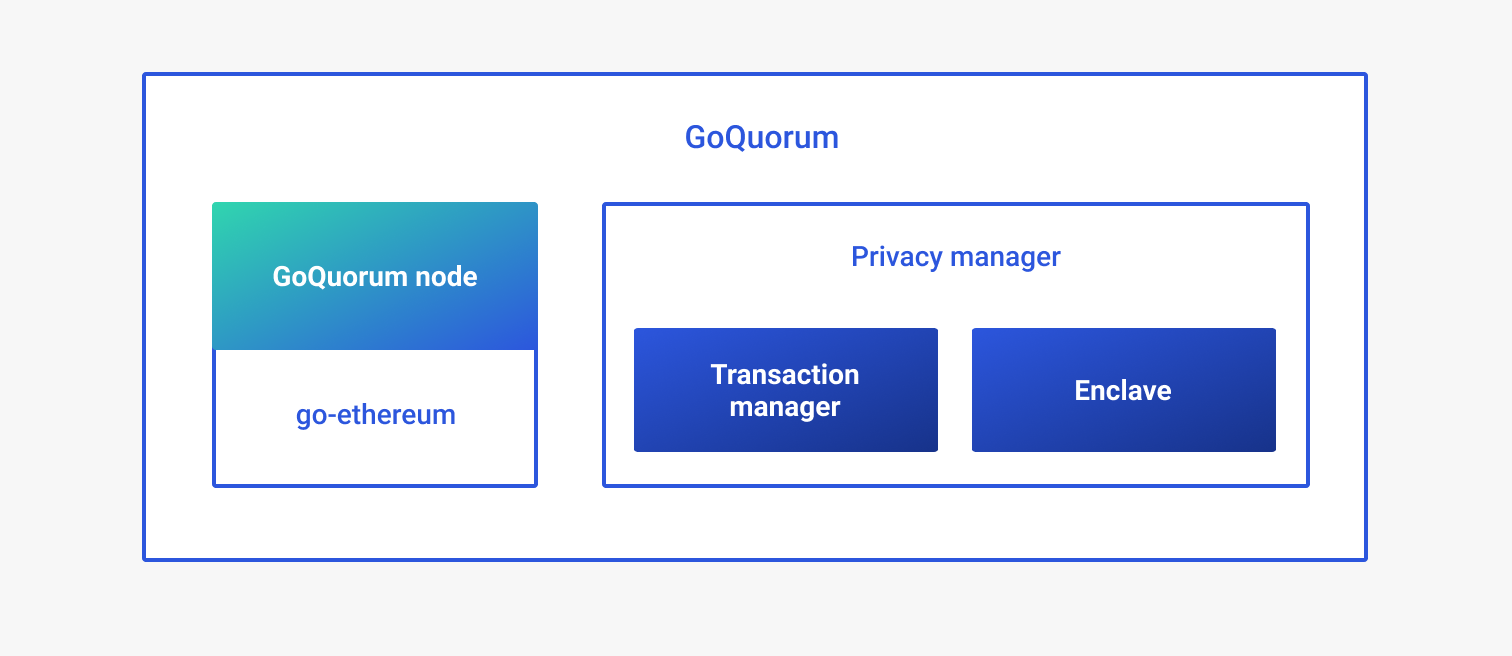Introduction
FPT Blockchain Lab
FPT Blockchain Lab are formed to establish in research and develop enterprise-grade blockchain networks. We are a group of blockchain experts, researchers, and developers who are passionate about blockchain technology and its potential to change the world.
FPT Blockchain Quorum
FPT Blockchain Quorum (opens in a new tab) is an Ethereum-based blockchain fork from GoQuorum.
Difference between FPT Blockchain Quorum and GoQuorum:
- Block time: 1 second
- Use empty block period feature to reduce storage usage
- Using QBFT consensus
- Pre-config networks for FPT Blockchain
- Default up to Berlin hardfork
- Default node type is all archive nodes (gcmode=archive syncmode=full)
About GoQuorum
Quorum is an open-source protocol layer that provides developers with the configurable projects needed to make blockchain applications successful. With Quorum, you have access to all the necessary components to take a blockchain solution from concept to production.
GoQuorum is a fork of go-ethereum (opens in a new tab) and is updated in line with go-ethereum releases.
Key enhancements over go-ethereum:
-
Privacy (opens in a new tab) - GoQuorum supports private transactions and private contracts through public/private state separation, and utilises peer-to-peer encrypted message exchanges (see Tessera (opens in a new tab)) for directed transfer of private data to network participants GoQuorum includes the following changes to geth:
-
Alternative Consensus Mechanisms (opens in a new tab) - with no need for POW/POS in a permissioned network, GoQuorum instead offers multiple consensus mechanisms that are more appropriate for consortium chains:
- QBFT (opens in a new tab) - Improved version of IBFT that is interoperable with Hyperledger Besu
- Istanbul BFT (opens in a new tab) - a PBFT-inspired consensus algorithm with transaction finality, by AMIS.
- Clique POA Consensus (opens in a new tab) - a default POA consensus algorithm bundled with Go Ethereum.
- Raft-based Consensus (opens in a new tab) - a consensus model for faster blocktimes, transaction finality, and on-demand block creation
Architecture
 The above diagram is very high-level overview of component architecture used by GoQuorum. For more in-depth discussion of the components and how they interact, please refer to lifecycle of a private transaction (opens in a new tab).
The above diagram is very high-level overview of component architecture used by GoQuorum. For more in-depth discussion of the components and how they interact, please refer to lifecycle of a private transaction (opens in a new tab).
Reference from GoQuorum (opens in a new tab)
About Enterprise Ethereum Alliance (EEA)
The EEA is a global community of blockchain leaders, adopters, innovators, developers and businesses. We’re accelerating business Ethereum through professional and commercial support, advocacy and research, standards development and ecosystem trust services.
Key Takeaways:
- The Enterprise Ethereum Alliance (EEA) "...is a member-led industry organization whose objective is to drive the use of Ethereum blockchain technology as an open standard to empower enterprises."
- The EEA's mission is to deliver an open, standards-based architecture and specification to accelerate the adoption of Enterprise Ethereum.
- The EEA provides its members a community and access to educational material and various technical and media resources.
How the Enterprise Ethereum Alliance (EEA) Works
The alliance aims to build, promote, and support Ethereum blockchain technology best practices, standards, and a reference architecture capable of handling real-world applications and usage.
Launched in 2015, Ethereum is a blockchain-based, decentralized software platform that enables smart contracts and Distributed Applications (dApps) to be built and run without downtime, fraud, control, or interference from a third party.
Ethereum is not just a platform but also a Turing complete programming language running on a blockchain that helps developers build and publish distributed applications.
Reference from Enterprise Ethereum Alliance (EEA) (opens in a new tab)